What Remains Of Edith Finch: Everything You Wanted To Know About Its Port To Nintendo Switch
Each year we see at least a couple of extraordinary, sometimes even strange, story-based titles that stand out from the total mass of published games. These titles win many famous industry awards and the unconditional love of thousands of players. Of course, publishers of outstanding titles want to extend the success by porting this game to platforms like Nintendo Switch but are often concerned about the dev team they could entrust porting to and be sure the same immersing gameplay experience for the new platform will be preserved.
This article will talk about our experience porting the award-winning What Remains of Edith Finch title, developed by Giant Sparrow and published by Annapurna Interactive, from PC to Nintendo Switch. You’ll find out what kind of team is needed and challenges you may face while porting a story-based game.
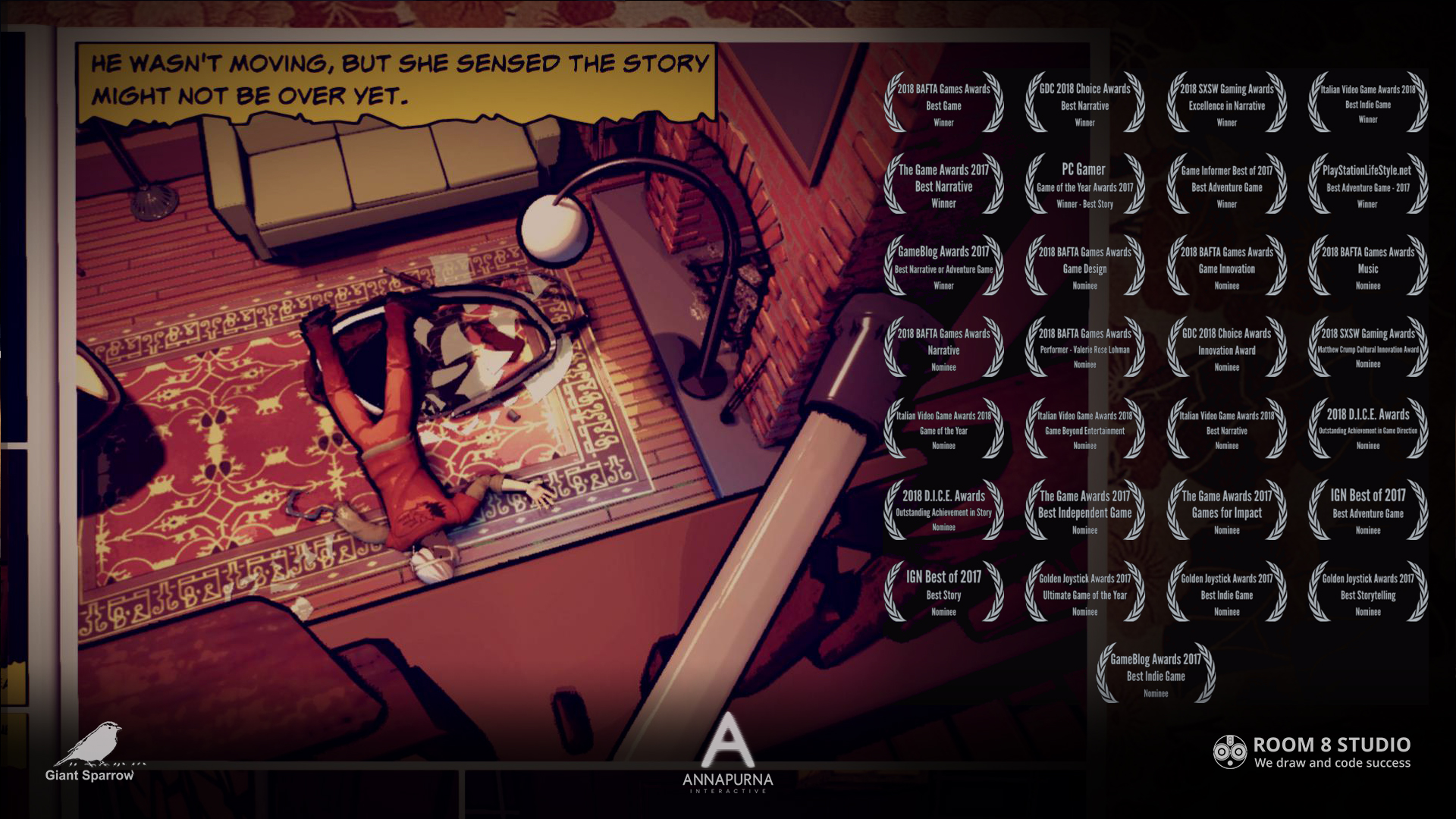
Why we got the project?
Before we move to the details of the process, it’s important to highlight that porting games to new platforms is not a decision that publishers and developers can make spontaneously. It should be well thought out in each aspect: from a general assessment of how the game’s mechanics and features fit the target platform to the composition of the porting team.
Setting up with an external team requires time and effort. That’s why publishers are looking for long-lasting partnerships with a reliable and experienced team with proven technical expertise that can result in serial game ports covering a substantial part of their portfolio. Along with saving on setup procedures, they want to be sure that the team can understand the essence of the game and even fall in love with the story. Why? Cause in many ways, this ensures the external team will also show care, excellence, and creativity while working on a porting project.
Room 8 Studio had the fortune to prove their ability to tackle all scope of work and ensure the high standards and the expected result. We gained experience porting various game genres to Switch. Some of the projects are described in our previous articles, like an art-based 3D adventure – ABZU and more. We also developed games for this platform from scratch (learn more about co-development of sports-based title with Ubisoft). Having this previous experience porting and developing various games for Switch, we discussed potential cooperation with Annapurna Interactive, which resulted in porting two of their titles at once.
Besides the joy of working with great professionals from Annapurna Interactive, the project helped us hone some skills gained in previous Switch ports. Especially in work with plenty of highly detailed art content in most scenes. Having a good background in dealing with the same challenges in some previous porting projects, our team has improved the pipeline and made some creative decisions, some of which are described below.
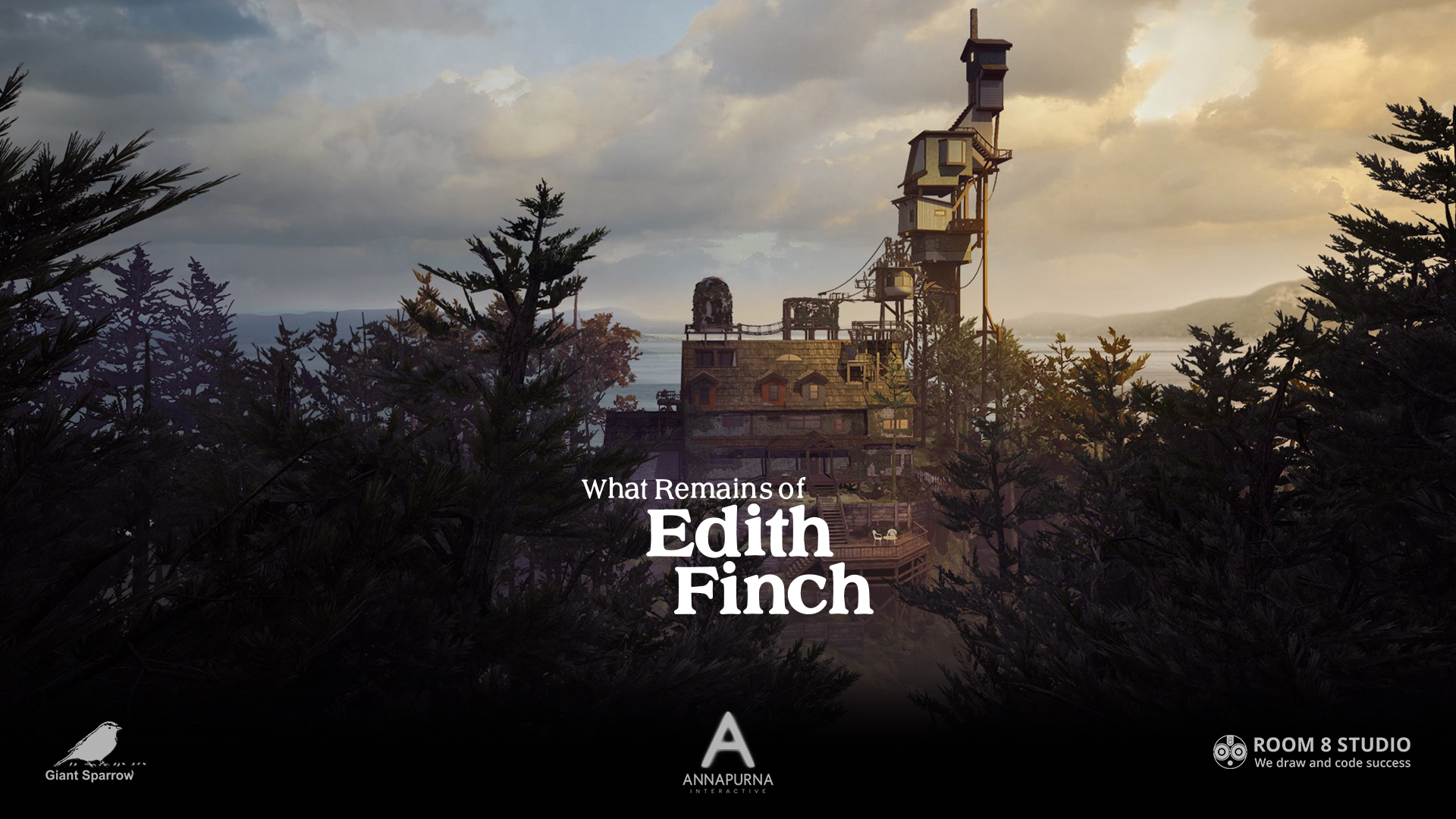
Processes and challenges
What Remains of Edith Finch is a collection of strange tales about a family in Washington state. As Edith, you’ll explore the colossal Finch house, searching for stories as she discovers her family history and tries to figure out why she’s the last one in her family left alive.
It’s that game genre that unlocks your feelings and involves all your senses through the story. Tackling game content like this, the developer should be careful while assessing what assets they can downgrade to optimize game performance and identifying those critical to be kept as is.
Level streaming. Passing through the core user scenario in What Remains of Edith Finch, the player goes through rooms that are represented with separate sub-levels. Each is loading and unloading at the runtime, initializing a significant impact on the console CPU resource. Our team worked on improvements to make the sublevels loaded and activated unnoticed by the player. We aimed to make the stream smooth and predictable and, at the same time, meet the technical limitations of the Switch platform.
A small detail of huge value. One element that guides the game’s story is the pop-up text with some critical notes. These notes have to inform the player about the narration details and suggest Edith the next action. Rendering this text with the whole scene wasn’t the right choice and made the text illegible. Therefore we allocated letters into a separate rendering pass. So, even if we decided to downgrade some objects in a scene to fit the screen resolution, the letters always remained in the highest quality possible (720p -1080p).
Transition to forward rendering. To save GPU resources, we made a transition to forward rendering – the new programmable graphics rendering pipeline. This transition required some additional work on reconfiguring materials and adding LODs to avoid the visible differences in the graphics quality compared to the original. The porting team also used some cool in-engine features like Precomputed Visibility. It helps calculate and predict where the camera will be at the exact moment and which objects are in view. Thus, we could save resources on rendering objects that are not visible in the scene at the moment.
SDK update. Initially, the game was made on Unreal Engine, version 4.10, which Nintendo Switch SDK does not support. When Room 8 Studio started work on a project, we first made a huge jump by transferring the engine with lots of modifications and more than a thousand custom changes to version 4.20. That was the only actual version of the engine at that moment that was supported by Switch. Later, when Nintendo updated the SDK for Switch, our team had to manually pull up all changes from the latest version to avoid bugs.
Another exciting challenge related to memory limits was the rich and fantastic sound background, which could not be made less meaningful. Room 8 Studio specialists worked hard to balance the need to preserve the original sound and compress it to fit the memory limits.
Post effects. Aimed to preserve all visual enhancers and effects that translate the unique aesthetics of What Remains of Edith Finch game, we made lots of minor but accurate adjustments. Trying to keep high game performance, we mixed static and dynamic shadows on trees, numerous of which surround the house, along with others, like lighting, etc.
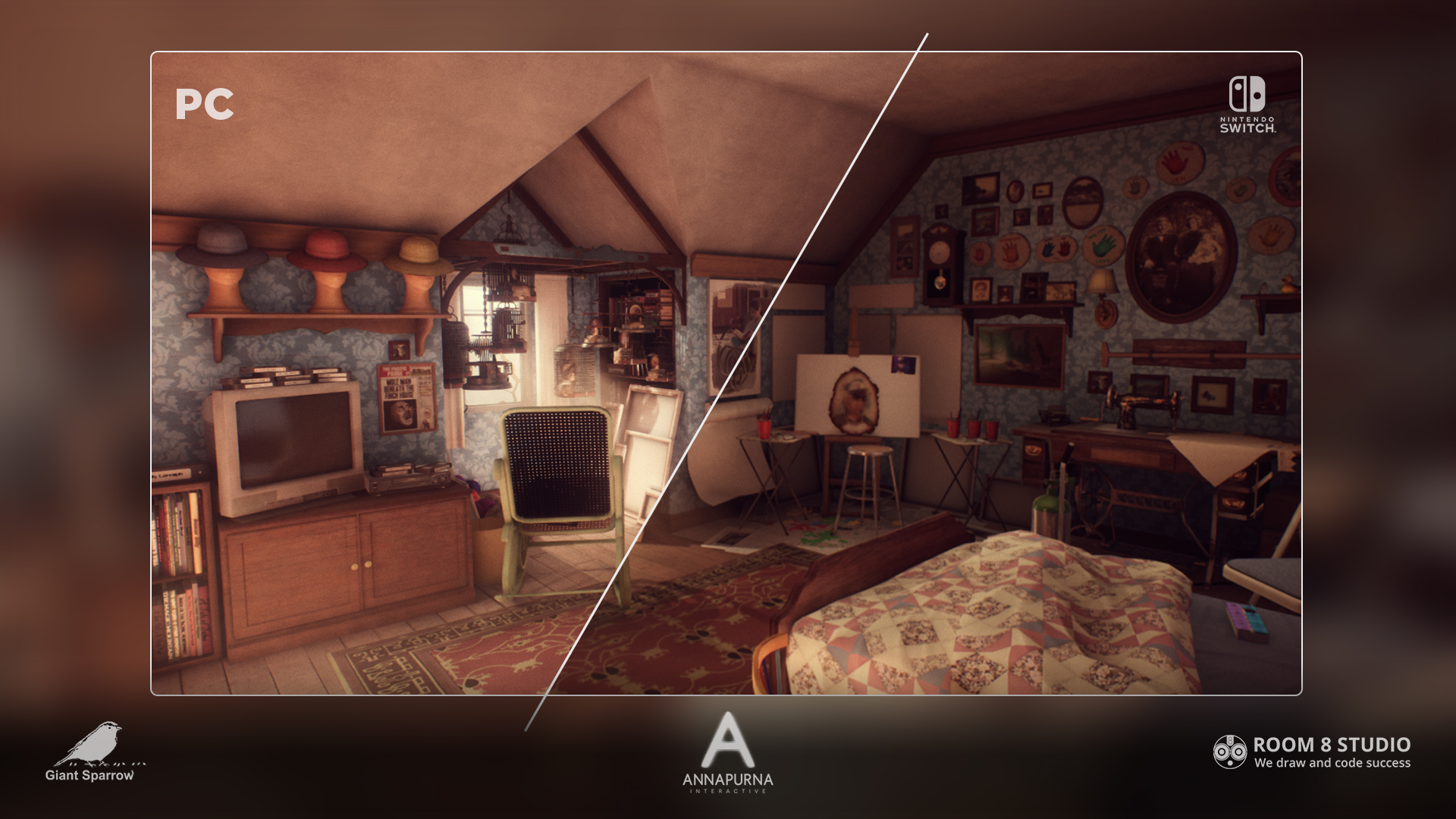
The most challenging ‘stories’ in the game. The gameplay and tone of the stories are as varied as the Finches themselves. The efforts we spent working on each story were also various. Some of the most challenging places to work with during the project:
1. Forest at the beginning of the game due to high GPU usage. Room 8 Studio specialists worked a lot optimizing lightning, shadows, geometry, and small detailed objects like foliage.
2. Barbara’s Story (Surprise). This story is stylized as a comic book and requires totally different shaders; we needed to add specific shaders support for forward-rendering.
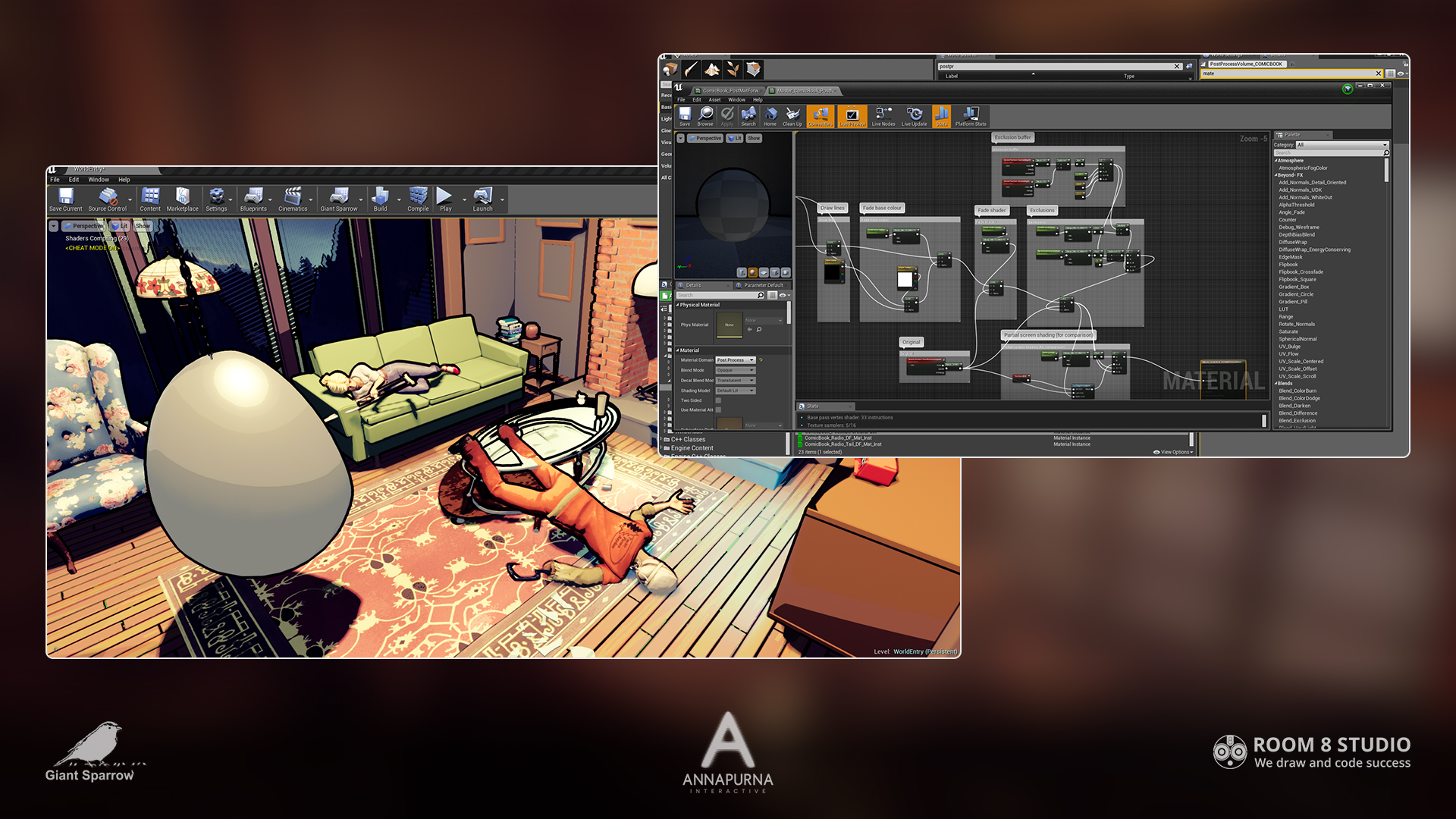
3. Lewis’ Story (Coronation), due to high CPU and GPU usage. In this story, we worked with two scenes rendering simultaneously. The ‘imagination’ scene (when the hero imagines a world where he is someone else) also needed support for forward-rendering. It was very hard for the CPU, for example, when we saw the palace scene with lots of musical instruments (plus respective sounds) that needed to be heavily optimized.
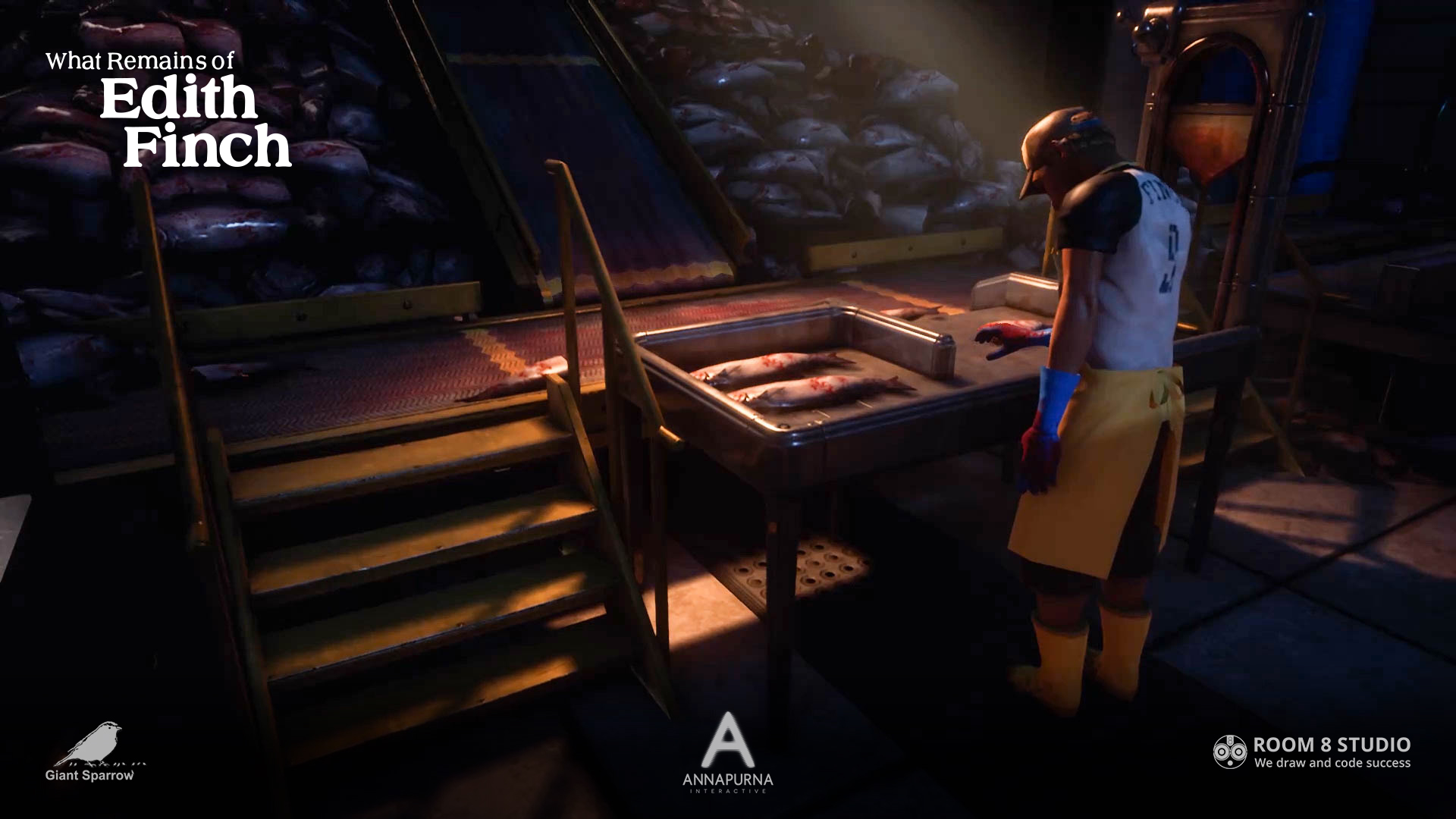
Bottom line
Stepping back to this project and its challenging moments, we consider porting What Remains of Edith Finch to Nintendo Switch one of the most exciting and enjoyable projects. Room 8 Studio team values the support from the game’s publisher and developer that translated into frequent and regular feedback and absolute alignment on the vision of the final product.
For the publisher, besides the essential confidence that the project will be completed on time and budget, the unified vision of how a player on the new platform experiences the game is crucial; that’s why the right team means so much.
Besides the technical expertise of developers and QA engineers, porting of storytelling games requires the involvement of creative staff and vision holders in the team. You want to ensure that all game components like its story, graphics, and gameplay will be adequately assessed, reworked, and transferred to Switch following the original concept. An excellent dedicated porting team will result in even more benefit through the relevant expertise of well-chosen roles in the team that define the success of the project. A producer can make a difference by thinking about your project’s success, foreseeing potential bottlenecks in terms of business, and orchestrating all-around processes amplifying them by their industry expertise. That’s why it’s vital to engage roles like Game Designers, Producers, and Associate Producers for developing and porting story-filled games to other platforms.
If your title is a story-based adventure with lots of unique components in the gaming experience and you want to preserve that feel on target platform as well, you would want to entrust this project into the hands of porting team with a proven track record, a team that will be taken by the idea to port your game, a team that will think the market success of the final product.
Daniel Kyrsa
Executive Producer, Room 8 Studio
Do you have a unique title that is loved by gamers on PC, Xbox, or any other platform? We are ready to get to the core of the gameplay, story, graphics, and technology and boost the game’s success by porting it to Nintendo Switch. Let’s discuss!



